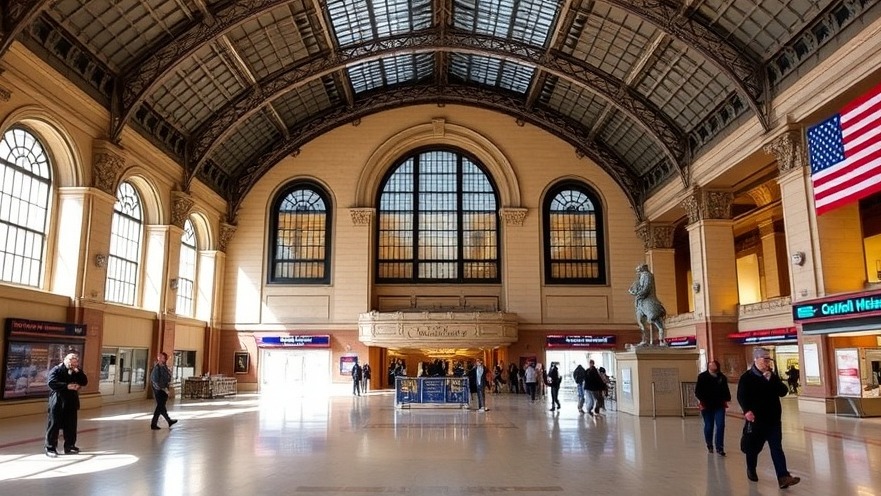
Trump Reclaims Control Over Washington's Historic Union Station
In a move that has sent ripples through the transportation sector, the U.S. Department of Transportation, under the directive of President Donald Trump, has announced plans to take back management of Washington's Union Station. This prominent transportation hub, celebrated for its architectural grandeur since its opening in 1907, is now facing a critical crossroads as federal oversight is reintroduced.
Bridging the Management Gap
The management of Union Station has been in the hands of a nonprofit organization in collaboration with Amtrak for many years, yet it has struggled with various challenges, including escalating maintenance costs, safety issues, and cleanliness. Transportation Secretary Sean Duffy, who articulated the government's vision while arriving via train in New York, emphasized that federal control can significantly enhance the station's operations. “We think we can manage the property better,” he asserted, noting the current state of neglect and the alarming presence of homelessness at the station.
Investing in the Future of Union Station
In the wake of this announcement, the debate over the necessary financial investment in Union Station has intensified. Washington Mayor Muriel Bowser has welcomed the federal government's increased involvement, especially given the city's limited financial capacity to undertake the estimated $8 billion renovations required. The federal government’s role is now seen as crucial not only for financial infusion but also for revitalizing this historic landmark, which is vital for the connectivity of the region.
Crisis Management Amid Crime Concerns
One of the most pressing issues surrounding Union Station is crime. The station has faced numerous public safety incidents, including a murder earlier this year, fueling narratives that crime is out of control in Washington. President Trump, during his tenure, has frequently pointed to crime statistics as justification for federal intervention in local governance, including the controversial deployment of National Guard troops.
A New Strategy for Modernization
The decision to take back control of Union Station also signals a shift away from previous redevelopment plans laid out by the Biden administration, largely focused on a proposed $10 billion redevelopment strategy. The Transportation Department has indicated it will favor attracting new tenants and revenue through a revised strategy aimed at restoring the station’s operational viability.
The Broader Implications for National Infrastructure
The takeover is more than just a localized issue; it reflects a growing trend of federal influence over major urban infrastructure. With recent moves to overhaul Penn Station in New York and maintain Amtrak funding at $2.42 billion despite Trump's past intentions to cut support, this moment marks a pivotal transition in how U.S. transportation hubs will be managed moving forward. By positioning the government as a proactive player in infrastructure management, the administration aims to set a precedent that prioritizes both safety and efficiency.
Your Role in Revolutionizing Union Station
As the story unfolds, public support and engagement will be vital in shaping the future of Union Station. Citizens and commuters alike must voice their concerns and suggestions, ensuring that the revitalization reflects the needs and aspirations of the community. Be a part of this crucial dialogue and stay informed on developments impacting this iconic landmark.
In conclusion, the shift in management over Washington's Union Station encapsulates the intersection of local governance and federal authority — an ongoing theme in national news that warrants close attention. With a legacy that extends over a century, the station’s future now hinges on strategic federal intervention that promises both renovation and revitalization amidst challenges that persist.
 Add Element
Add Element  Add Row
Add Row 



Write A Comment